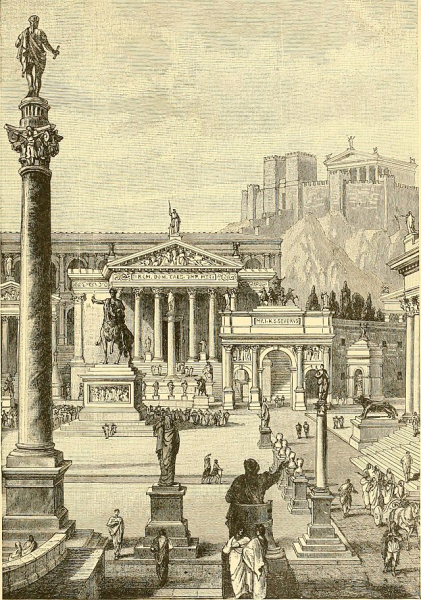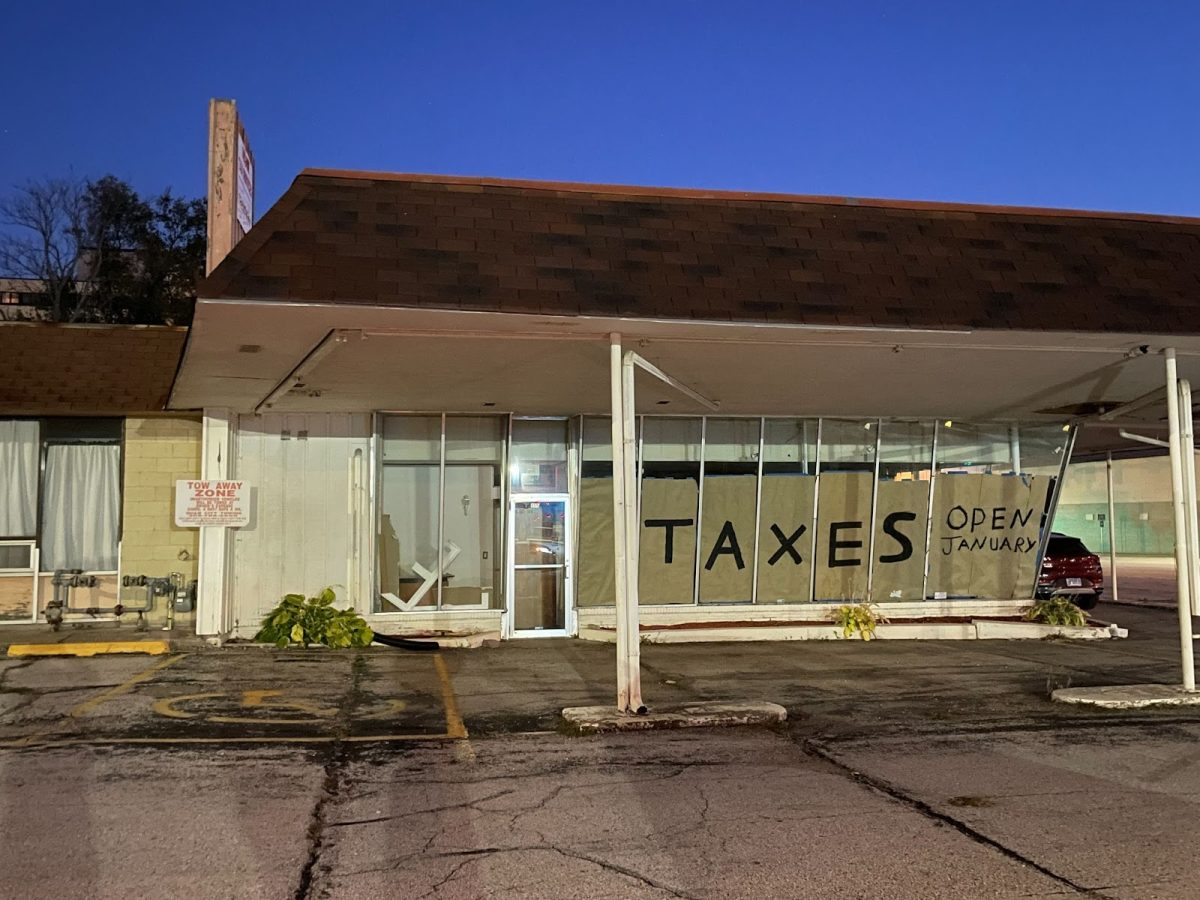The ‘American Dream’ is an enthralling fantasy; however, it is not necessarily as prominent a reality as we might think it is. Prices are high, wages are low, and there is limited room for advancement of one’s status the lower down you are socioeconomically. This has impaired the middle class, draining the class’s overall wealth of 2 trillion dollars according to the Federal Reserve. A key point in understanding the reality of life for most Americans is knowing that social media is a horrible representation of it. “Influencers” promote mass consumerism when 65% of Americans are living paycheck to paycheck, according to Barrons. There is a larger divide between the rich and the poor today than ever before, as the top 1% own more wealth than the bottom 92% of the population, as the senior United States senator from Vermont, Bernie Sanders notes. This divide reduces the efficiency of the government, and it is detrimental to the livelihoods of the general population.
A Historical Comparison of the Pre-Revolutionary French Bourgeoisie to the Modern Day American Middle Class
The French bourgeoisie were an instrumental part of French society. Revolutionizing industries and advancing ideas from the Enlightenment age have been noted by modern day French scholars, and they see these movements at the time stemming from the bourgeoisie. France’s success from the 1600’s to today can be attributed to their middle class. Unfortunately, just like today, the middle class was abused, until, unlike today, they completely metamorphosed France by starting the French Revolution and ensuring better conditions for themselves.
The middle class in France was treated atrociously before the French Revolution. They lacked power within the government and the power to advance socially. This stemmed from the French nobility being hereditary, thus restricting the bourgeoisie from ever rising above their station. Consequently, the first and second estate (the clergy and nobility) were taxed little to nothing, and the burden of most of the taxes fell on the third estate (the peasants and bourgeoisie), overwhelmingly on the bourgeoisie, however, as the peasants had little to give. Ironically, the church and nobility owned most of the land, so the proportions of income and land to taxation was wildly out of proportion. These conditions only changed when during the Estates General, a meeting of the estates, the members of the Third Estate walked out due to discontent with their situation. They later renamed themselves the National Assembly and convinced the king to allow them to write a constitution.
Like the French bourgeoisie, the American middle class is drowning in debt, student loans, and high taxes. For us to share so many negative qualities with the middle class of France hundreds of years ago is not only an embarrassment but also a tragedy. While a revolution is not the realistic scenario today, we should learn from the French bourgeoisie and ignite our own modern solutions to helping restore the middle class. A revolution in the sense of freeing the people from monopolies, corrupted systems and despondency is the key to not repeating history.
The Significance of the Middle Class
From an economic standpoint, a flourishing middle class contributes heavily to a country’s finances. The middle class has empirically been the largest consumers, accounting for two-thirds of all consumption. Government prevention of monopolies would have mitigated the statistics we have today, as the 1% controls two-thirds of new wealth. Additionally, America’s middle class has decreased from 61% to 50% of households in only 50 years.
When consumerism has decreased empirically, it has been when less middle-income families purchase extraneous items. This results in struggling businesses, as they have more supply than demand. However, because of monopolies, there is no way for the market to recover from oversupply. This economic concept was first introduced in the 1700’s through Adam Smith’s classic text, The Wealth of Nations in which he criticizes mercantilism.
This creates less economic returns for the government since consumerism supplies 70% of America’s GDP. The majority of the population loses money due to a declining middle class; therefore, the government should be just as concerned as the people. When GDP decreases, there is a drop in investment and education with an increase in the level of debt. The famous Roman Empire was even a victim of inflation, ultimately resulting in its downfall. The Roman Empire did not fall from the numerous outside attacks that they faced throughout history, but from internal economic inefficiencies. Groups such as “the Visigoths, Vandals, Angles, Saxons, Franks, Ostrogoths, and Lombards took turns ravaging the Empire.” The Roman Empire suffered from these attacks, but the fatal blow to them came from inflated food prices from a decrease of agricultural production. These economic impacts had more detriment to the empire than any attack they faced. Thus our precarious economic situation, so much of it dependent on the middle class, is vital to preserve.

Polarization’s Monopoly of America
Since the time of President Harry Truman, the opposition of a presidential candidate based on political party has increased from less than 50 points to more than 80. People are no longer voting for the candidate; instead, they are voting for the party. Giving up the policy of supporting a candidate based on their values has contributed to many decisions being made in the government which negatively impact most Americans.
A central government was created by our founding fathers to unite our states. The original two parties, the Federalists and the Democratic-republicans, never intended for our country to be so polarized. Mr. Joshua Fialkow, an A.P. microeconomics teacher at The Bronx High School of Science, said, “The system is rigged in favor of the wealthier. The rules are written by the wealthier and the more powerful, for example as with tax rules.” It is an endless cycle, which only results in putting more people in poverty and increasing the wealth gap.
Mr. Stuart Symons, an A.P. World History teacher at The Bronx High School of Science said, “It would be impossible to get middle class Americans who are Republican and middle-class Americans who are Democrats to agree on much of anything.” Here, he points out the detrimental effects of increasing political polarization on the cooperation of a nation. Additionally, when the people of a nation cannot come together on social or political issues, it is difficult to create compromises that benefit the people themselves. Mr. Fialkow added, “Polarization is a big thing. It means you are going to have less trust in the government.” This highlights many current issues in our political debates, with most of the country opposing an issue but not being able to come together to solve the problem.
A prime example of that is the issue of abortion. Statistics show that the number of Americans who believe abortion should be legal is 85%. This shifting view can be mainly attributed to the news. The news shows a greatly over exaggerated version of what each political party thinks. While many Americans don’t share the far right or left radical ideas, many Americans vote off of misinformation about the other party. This increases polarization and gets rid of the reason why we have political parties in the first place, which is to balance out the government and make it fair for all voters. So with the issue of abortion, the far right politicians overturning Roe versus Wade and creating more bans, are much less popular to the everyday American than most people believe. Their policies result in a loss of women’s healthcare that most of America is against losing. This is vital to the middle class as it represents most of America, and as it declines, it needs to be able to come together to rally for its own interest. Polarization will kill any chance of complete cooperation between people, and this only works against the middle class.

Innovation
The middle class is slippery; it is easy for problems to spiral once they start. Innovation is a prime example. The middle class is key to innovation, as they produce the most entrepreneurs and revolutionary ideas in hopes of their own personal monetary returns. However, innovation is also crucial to the middle class, as the jobs that it creates and the opportunities in new fields allow for class mobility. With the decline of one, the other shortly follows. Essentially, the middle class’ depletion affects more than just singular families; it affects the entirety of the American manufacturing industry.
Innovation in the U.S. has also decreased due to the COVID-19 pandemic and monopolies. The manufacturing industry has taken a particularly hard hit. Growth has been slowing for a long time and reached what is considered a flat margin during the pandemic. The manufacturing industry has been the most important industry in getting out of recessions. The U.S. is currently hovering over a possible recession which could devastate huge populations if it were to get any worse. A recession would cause an increase in unemployment, a decrease of property value, and a crisis in the financial markets.
Education
We currently have a 3.8 percent unemployment rate. While this is lower than it has been historically, it is misleading, as this drop in unemployment might not be as positive as it appears.
A majority of America is underpaid. This is in part due to inflation and the fact that our minimum wage is not nearly sufficient; however, it is mainly because of the skill gap in our country. Many Americans do not have sufficient education, resulting in low paying jobs being given to thousands of citizens.
The American school system needs to receive more funding and better management. Education is a staple for how well a country is performing, and as of 2023, the United States is not in first place. Neighborhoods with poverty have less opportunities for education. Many people can’t afford to pursue education after high school. Student loans are so expensive that many think it is not worth the risk, as even high earners today struggle to make the payments. Businesses cannot find talent that they need to fill vital jobs. This has created a current skill gap of 44%, meaning 44% of businesses can’t find enough qualified workers to fill jobs. This increases inefficiency in businesses, thus decreasing profits. Education is what makes a society complex and competitive. Deteriorating education for the next generation is a mistake for not only the business sector but also for the entire economy.
Poverty
The diminishing economy is increasing the amount of people in poverty. Poverty rates rose to 12.4% in 2022 from 7.8% in 2021. Poverty among children more than doubled, to 12.4% , from 5.2% the year before. Malnutrition, low education, and community violence are all associated with increased poverty. Given how expensive prescriptions, groceries, and the basic cost of living has become, poverty is now the main cause of death for 183,000 people in the U.S. yearly. An impact of this magnitude could have been completely avoidable.
Hegemony
In our world of multi-polarity (a division of power between many sources in which they are in constant competition), a country’s worth is mainly defined by the extent of their hegemony (leadership or dominance). This kind of world conscience has led to two world wars with dire consequences and rapid nuclear proliferation. Global superpowers such as America and China would most likely not have a direct war now because of this proliferation. Even though the subject of nuclear war is very dramatized in the news, world leaders know that if they were to participate in a world war today, it would mean mutually assured destruction. However, they have no quarrels with fighting through proxy wars. Developing nations and third world countries will be impacted even greater by conflict caused by multi-polarity. Thus since multi-polarity is not changing anytime soon, America maintaining supreme hegemony is a prerequisite for our national security and other countries who depend on us.
China is leading the world in innovation according to the Harvard Business Review. Russia has an unmatched military in the Arctic and control over the Arctic’s natural gas and resources. In both of these scenarios, the United States has fallen behind in maintaining our supremacy, and in the case with China, it has led to many countries in Africa being debt trapped by China. China uses Africa as an outlet for their resources, and has thus installed many mining factories which have been reported to violate human rights concerns of African people whom they employ. Therefore, China’s wish to continue their uncontested mining rights in Africa have led it to becoming Africa’s largest bilateral lender, creating around 73 billion dollars of Africa’s debt in 2020 alone. Now, many African countries are debt-trapped to China and they are the people who are paying the price. This problem has evolved due to a plethora of reasons, but mainly being the loss of American power in Africa, as we have traditionally been the peacekeepers regions where a developing nation is being stifled.
The depleting power of the dollar not only continuously hurts the United States, but it also hurts developing nations. To keep up with economic hegemony around the world, improving the middle class is the key.
Mr. Fialkow commented on the biggest impact of a suffering middle class. He said, “The more inequality you have between the classes — it’s been proven — the less trust they have in government, and you get the erosion of democratic norms.” If you the reader get anything from this article then remember this quote. Protecting the middle class is paramount to making sure that we maintain the truest goals of democracy.
A revolution in the sense of freeing the people from monopolies, corrupted systems, and despondency, is the key to not repeating history.

